Austin Economic Indicators

August 4, 2022
Austin’s economy recorded solid growth in June. The Austin Business-Cycle Index expanded at a greater rate than in May, as the unemployment rate remained low and Austin’s employment growth accelerated. COVID-19 hospitalizations continued to increase with the transmission of the new variants. House prices in Austin declined slightly, while the state’s prices ticked up in the past month.
Business-cycle index
The Austin Business-Cycle Index—a broad measure of economic activity—grew at an annualized 12.8 percent in June (Chart 1). This follows an 8.9 percent growth rate in May.
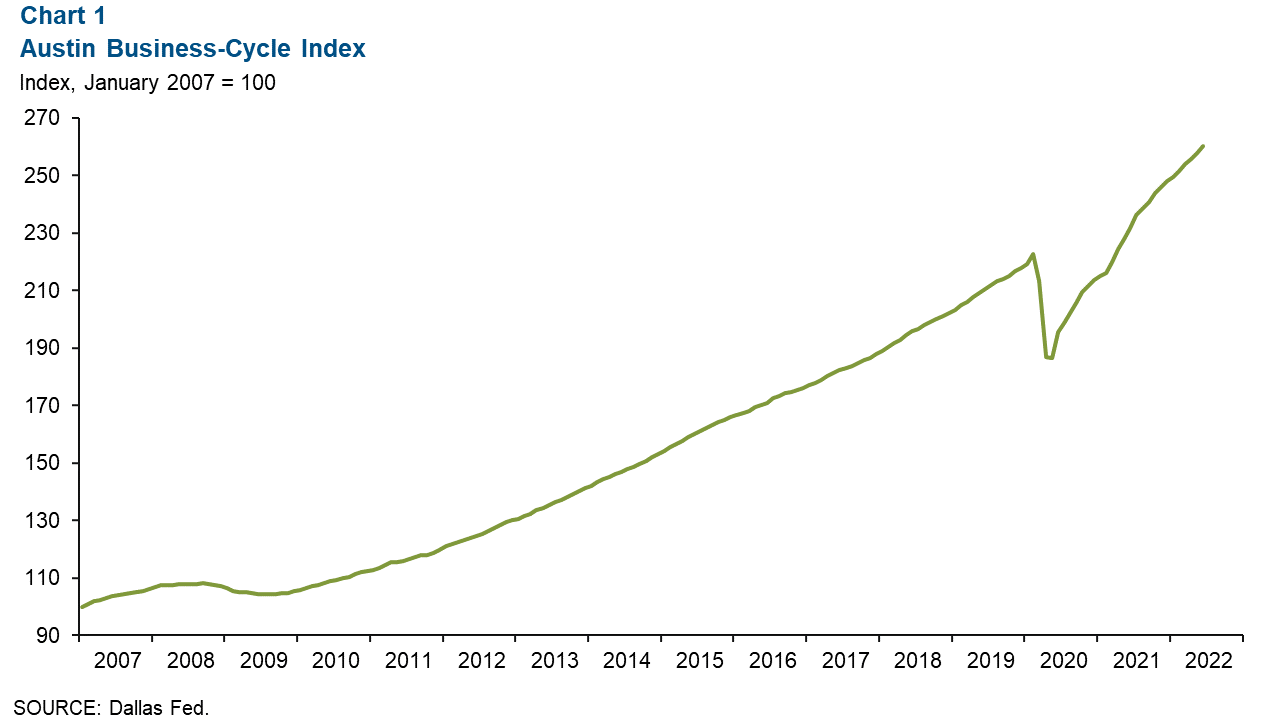
Labor market
Unemployment rate remains low
Austin’s unemployment rate remained at 2.9 percent in June (Chart 2). This compared with the state’s jobless rate of 4.1 percent and the nation’s rate of 3.6 percent. The metro area labor force increased slightly at an annualized rate of 0.4 percent in June, slowing from May’s 1.6 percent. Year to date, Austin’s labor force has grown 1.8 percent.
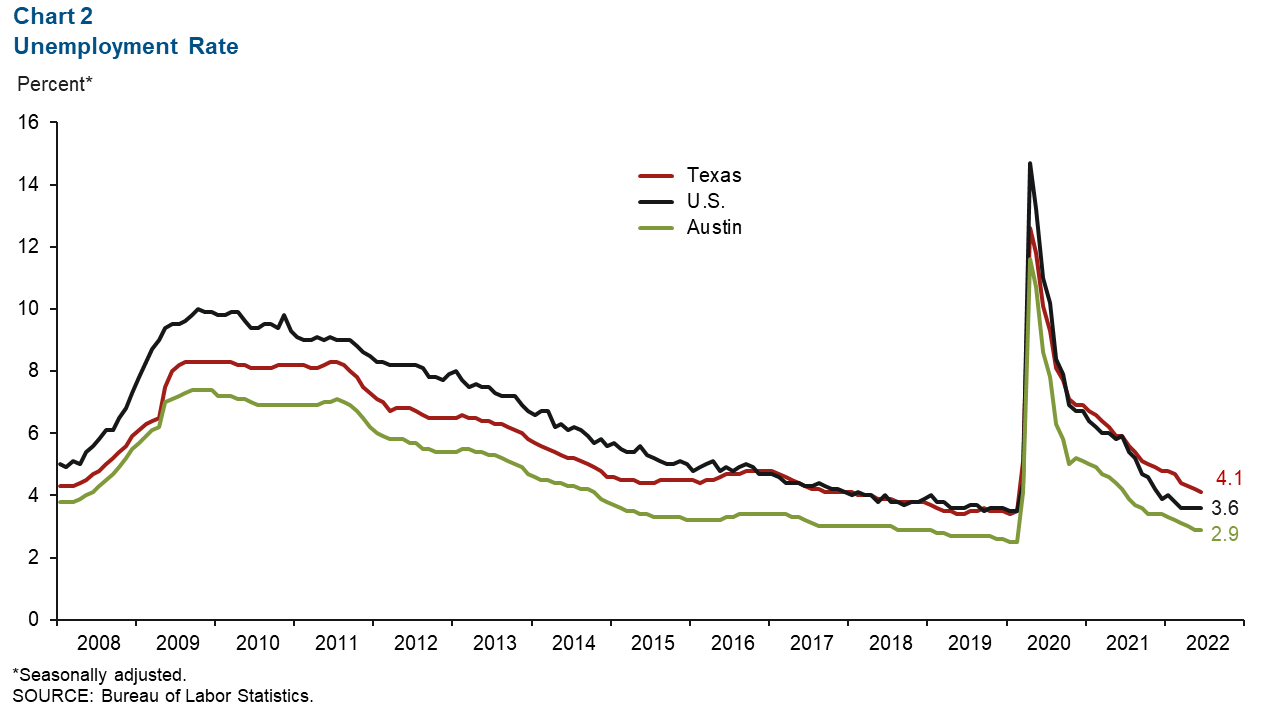
Private payroll jobs record strong gains
Austin employment increased at a 11.0 percent annualized rate, or by 10,728 net jobs, for the month of June (Chart 3). Growth was led by leisure and hospitality (up 46.6 percent, or 4,272 jobs) followed by manufacturing (up 24.0 percent, or 1,264 jobs). Government was the only sector to decline in the past month (down 0.8 percent, or 180 jobs). As of June, Austin payrolls increased 6.8 percent year over year.
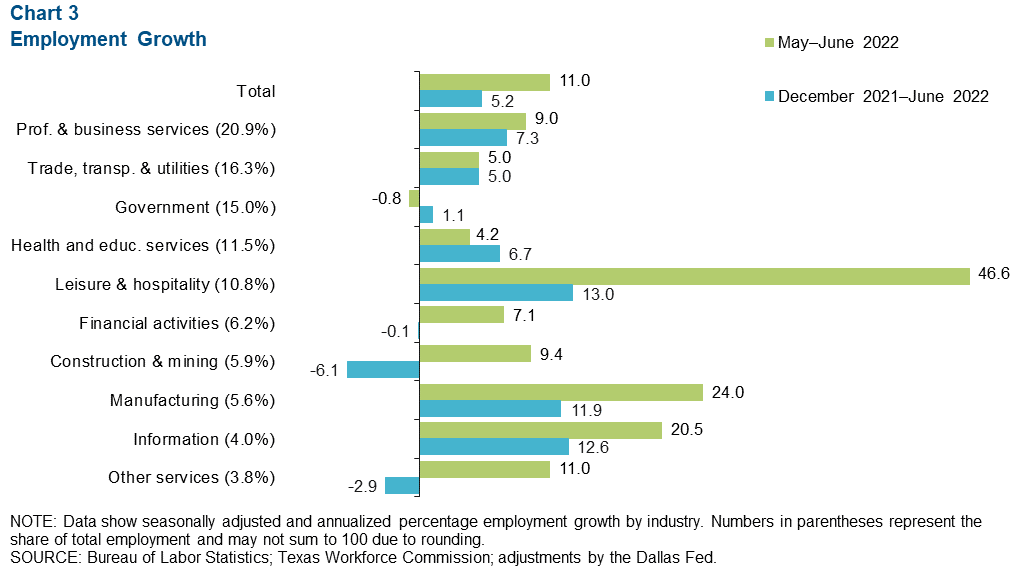
Wages
Austin’s three-month moving average for wages increased to $32.90 in June, greater than both the U.S. average of $31.86 and the state average of $29.81 (Chart 4). The year-over-year percent growth in wages decreased from 9.9 percent in May to 7.6 percent in June for Austin, but this still outpaces the year-over-year gains of 4.5 percent in Texas and 5.1 percent for the U.S.
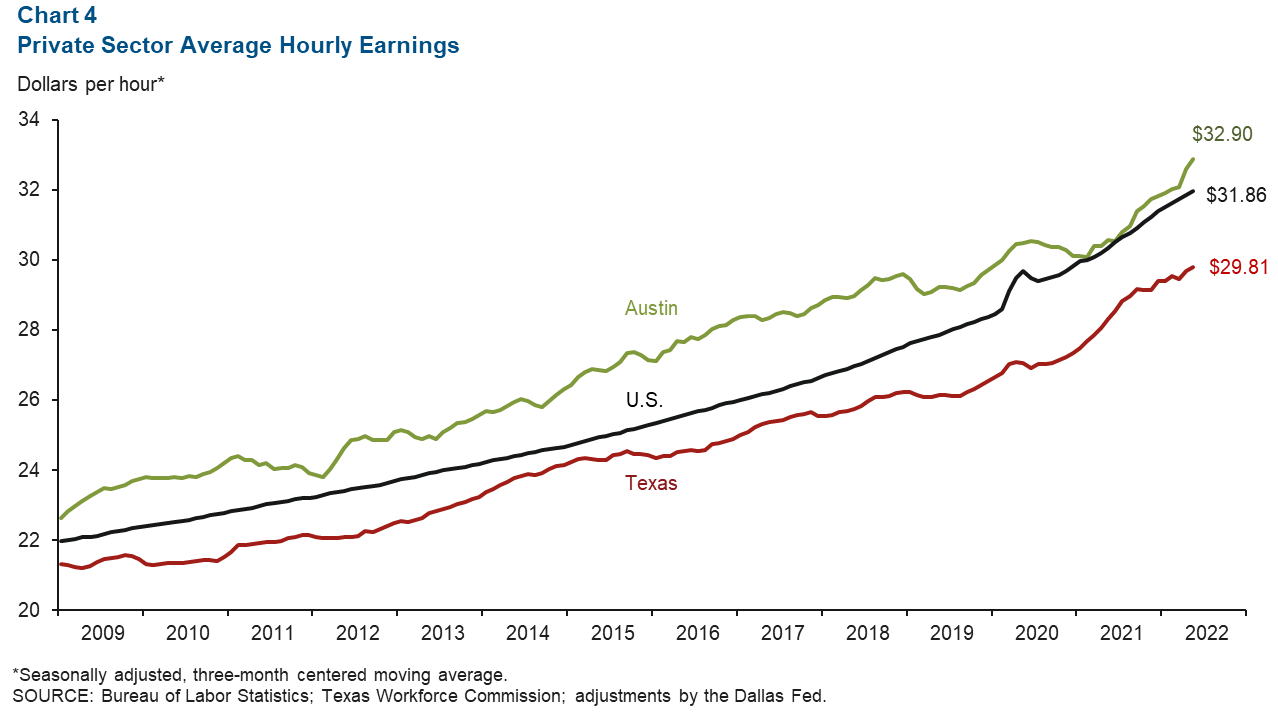
COVID-19 statistics
The number of people hospitalized with COVID-19 in both Austin and Texas continued to increase in July. While COVID-19 hospitalizations remained far below their January peak, Austin and Texas saw increases of 43 percent and 49 percent, respectively, in the seven-day moving average of hospitalizations in July. As of July 28, the seven-day moving averages of the number of hospitalized COVID-19 patients were 193 in Austin and 3,021 statewide (Chart 5).
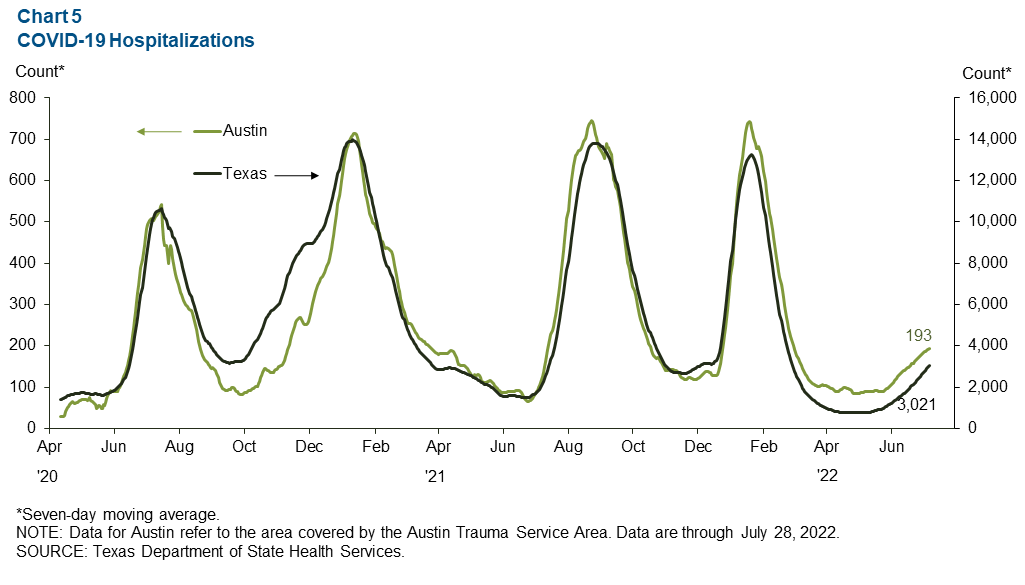
Real estate
Austin home prices declined in June by 1.8 percent, resting at $520,233 (Chart 6). In contrast, Texas experienced a 3.0 percent increase, with median home prices at $349,191. Overall, both Texas’ and Austin’s median home prices still grew at 7.1 percent and 9.6 percent, respectively, over the past year.
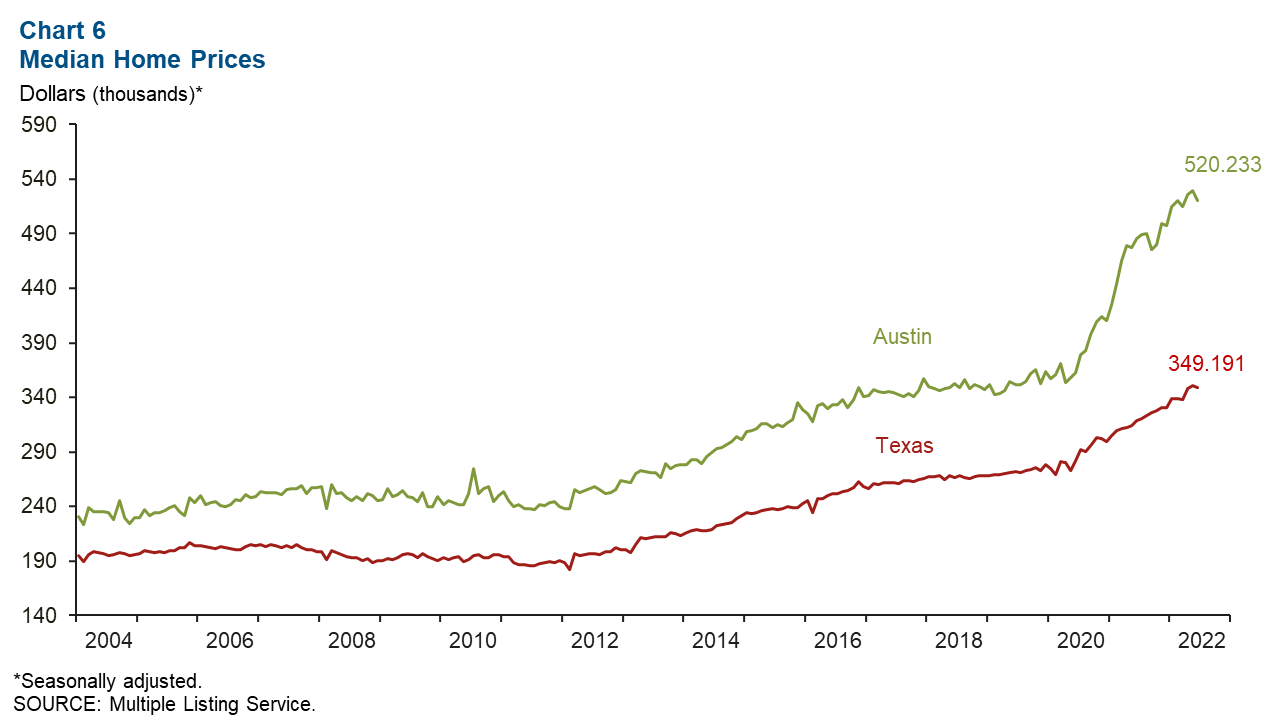
NOTE: Data may not match previously published numbers due to revisions.
About Austin Economic Indicators
Questions can be addressed to Vee Kalkunte at Prithvi.Kalkunte@dal.frb.org.
Austin Economic Indicators is released on the first Thursday of every month.